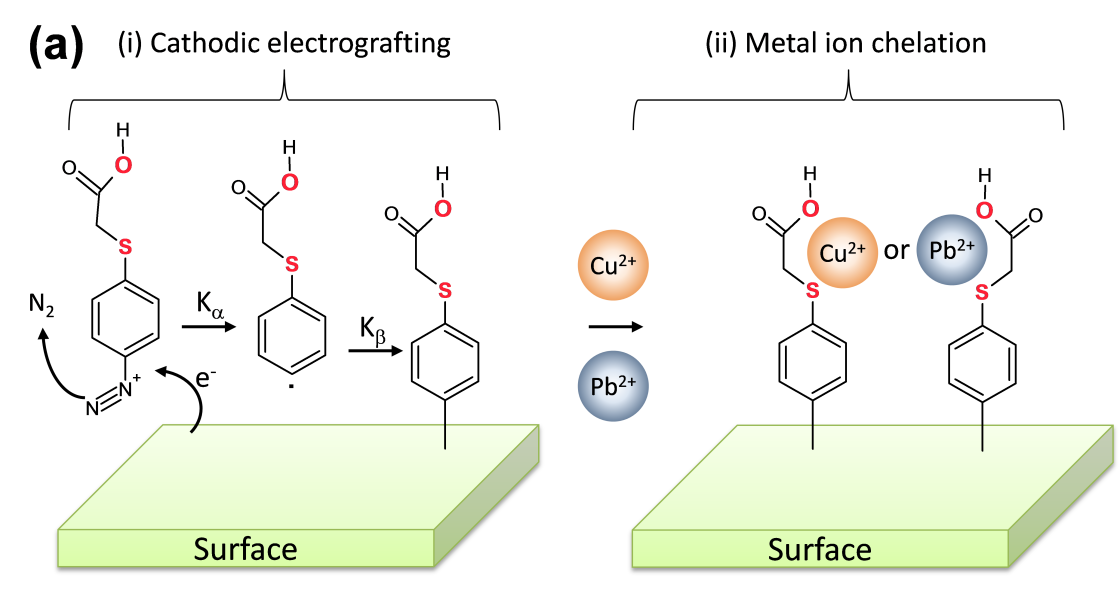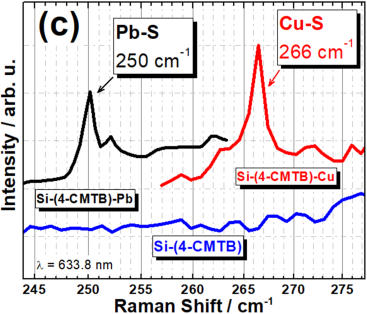Institute Silicon Photovoltaics
Sensing of heavy metals
Copper (Cu) concentrations above threshold limits cannot only be toxic to aquatic lifeforms but also to humans. Lead (Pb) poisoning in humans can result to severe health problems including irreversible brain damage. In view of limiting heavy metal ion (HMI) pollution and poisoning problems, innovative systems designed for HMI detection and trapping continue to receive tremendous attention among material scientists globally. Organic functionalization of surfaces has been successfully achieved via direct electrografting of aryl diazonium derivatives for use in heavy metal chelating [1].



Fig 1: a) Scheme for surface modification for HMI chelation by cathodic electrografting of carboxymethylthio-ligands (4-CMTB), b) electrochemical current-voltage curves during functionalization via the 4-[(carboxymethyl)thio]benzenediazonium salt, c) Raman backscattering fingerprints of Cu-S and Pb-S bonds indicating chelation on the Si-(4-CMTB) surface.
references
[1] Fabrication and Characterization of Surfaces Modified with Carboxymethylthio Ligands for Chelate-Assisted Trapping of Copper; Adongo, J.O.; Neubert, T.J.; Sun, G.; Janietz, S.; Lauerman, I.; Rademann, K.; Rappich, J.; ACS App. Mater. & Interfaces 9 (2017) 24273–24281.
